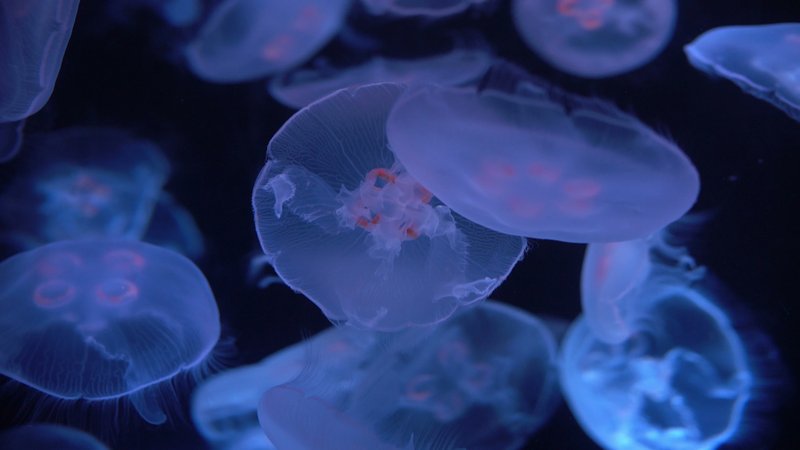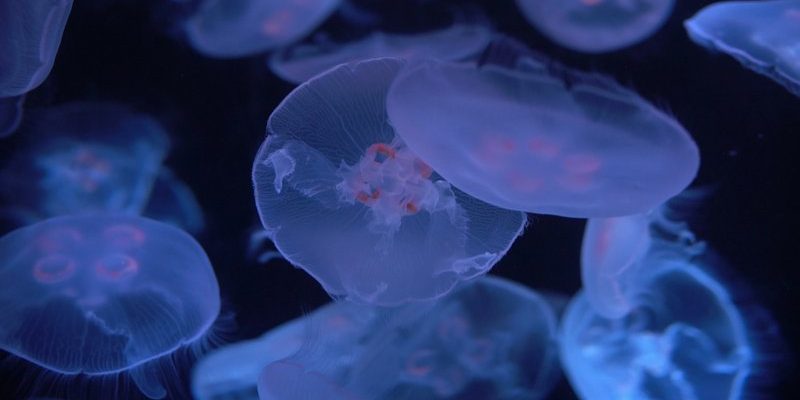
With their simple, umbrella-shaped bodies and long, trailing tentacles, moon jellyfish are a classic example of nature’s ingenuity. It’s easy to appreciate their beauty, but understanding their evolution gives us a broader perspective on life in the ocean. These creatures belong to the phylum *Cnidaria* and are an excellent example of how life can adapt to its environment. They don’t have brains or hearts, yet they’ve managed to survive for over 500 million years! That’s a lot longer than many dinosaurs walked the Earth. Let’s pull back the curtain on their history and see how they’ve evolved over time.
Understanding the Origins of Moon Jellyfish
Moon jellyfish, or *Aurelia aurita*, have an ancient lineage that dates back to the Cambrian period, roughly 500 million years ago. This time frame is significant because it’s when many other marine creatures started to appear in the fossil record. The earliest ancestors of jellyfish were simple, multicellular organisms without complex structures. Over time, they developed into the jellyfish we know today.
Their basic body plan has remained largely unchanged for millions of years. How is that possible? Well, the simplicity of their design might actually be their greatest strength. This minimalist structure allows them to adapt easily to various environments. They can thrive in both deep and shallow waters, hanging out in everything from coastal bays to the open ocean.
Interestingly, moon jellyfish have a fascinating life cycle, switching between a polyp stage and a medusa stage. In their polyp stage, they stick to surfaces, while in the medusa stage, they float freely, showcasing their beautiful bell-shaped bodies. This dual life stage has helped them survive various environmental challenges over time.
Moon Jellyfish Anatomy: The Art of Simplicity
What does a moon jellyfish look like, and how does its body work? The anatomy of these creatures is surprisingly straightforward yet effective. Their umbrella-shaped bell can be up to 40 centimeters (around 16 inches) wide, allowing them to move gracefully through the water. The gel-like consistency of their bodies is primarily made up of water—about 95%!
This high water content gives them a unique advantage, making them lightweight and buoyant. They don’t need to expend a lot of energy to stay afloat, which is ideal for survival. Their trailing tentacles are equipped with tiny stinging cells called nematocysts, which help them capture food like plankton and small fish.
Here’s the thing: despite their delicate appearance, moon jellyfish are incredibly resilient. They can survive in low-oxygen environments, where many other marine animals would struggle. This adaptability is a key part of their evolutionary journey.
The Role of Moon Jellyfish in the Ecosystem
Moon jellyfish aren’t just beautiful; they play an essential role in marine ecosystems. They act as both predator and prey, contributing to the balance of ocean life. As predators, they help control plankton populations. Too many plankton can lead to algal blooms, which can deplete oxygen levels and harm other marine creatures.
On the flip side, moon jellyfish are a food source for various animals, including sea turtles, larger fish, and even birds. Their presence in the food web emphasizes the interconnectedness of ocean life. Without them, the balance could be thrown off, impacting many other species.
Their ability to thrive in human-altered environments also raises interesting questions. For example, moon jellyfish populations have been known to increase in warmer waters due to climate change. This phenomenon can lead to jellyfish blooms, which sometimes disrupt local fishing and tourism industries.
The Impact of Climate Change on Moon Jellyfish
Speaking of climate change, let’s delve into how it affects moon jellyfish. As ocean temperatures rise, these creatures are seeing shifts in their habitats. Warmer waters can lead to more blooms, where large numbers of jellyfish gather in one area. This can be both fascinating and problematic.
One issue is that dense populations of moon jellyfish may compete with other marine life for food. Additionally, these blooms can clog fishing nets and damage fishing gear, posing economic challenges for coastal communities.
However, some researchers view the increase in moon jellyfish as an indicator of changing ocean health. Their adaptability to varying conditions makes them a species to monitor closely. As such, studying their evolution may provide insights into how marine ecosystems respond to climate change and human activity.
Unique Adaptations of the Moon Jellyfish
Moon jellyfish have several unique adaptations that have helped them thrive for millions of years. One fascinating feature is their ability to regenerate. If a jellyfish loses a part of its body, it can often grow it back, ensuring its survival in the face of predators or other hazards. This regenerative ability is almost like having a superpower in the animal kingdom!
Another adaptation is their symbiotic relationship with certain types of algae. Some moon jellyfish host these tiny organisms within their tissues, which can help them gather energy from sunlight. This relationship not only provides the jellyfish with additional nutrients, but it also highlights the beauty of cooperation in nature.
They also have a highly effective method of movement. By contracting their bell-shaped bodies, they can propel themselves through the water with ease. This simple yet effective way of swimming lets them move both swiftly and gracefully—a remarkable feat for such a simple organism.
Future of the Moon Jellyfish: Evolution Continues
Looking ahead, the future of moon jellyfish remains uncertain but intriguing. As we face ongoing environmental changes, these creatures will likely continue to evolve. Their adaptability suggests they may persist in various ecosystems, even as others struggle.
Researchers are keen to study these changes, as understanding how moon jellyfish adapt can provide valuable insights into broader ecological trends. It’s essential to consider how our actions—like pollution and climate change—could influence their evolution. Protecting marine habitats means safeguarding these incredible creatures and the roles they play.
So, what can we do? Raising awareness about ocean health, reducing plastic waste, and advocating for sustainable fishing practices can all help maintain a balanced ecosystem where moon jellyfish—and other species—can thrive.
In conclusion, the evolutionary journey of the moon jellyfish is not just about these animals themselves; it’s a reflection of the broader story of life in the oceans. As these ancient beings continue to adapt, they remind us of the resilience of nature and the intricate connections that bind all forms of life. Let’s appreciate and protect the oceans, ensuring that moon jellyfish and their ecosystems remain vibrant for generations to come.

